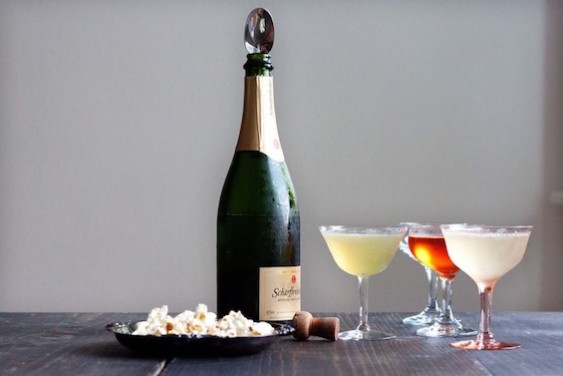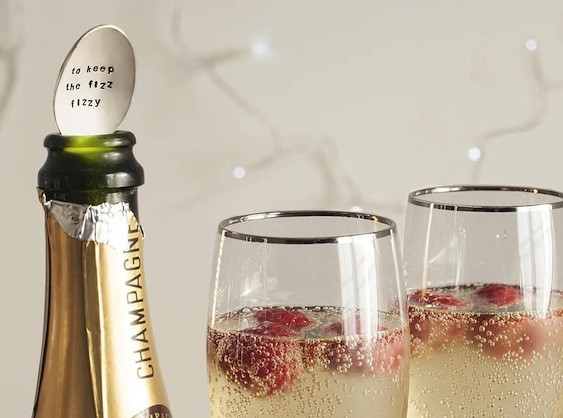One of the most prevalent pieces of wine wisdom is that putting a silver spoon in the mouth of an open champagne bottle will preserve its bubbles. While that’s certainly a nice image, there’s actually very little evidence that it actually works.

Common wisdom holds that a spoon will hold in the bubbles. But is that the case? Photo source: Food52
There’s a theory that, because metal is more of a conductor than liquid, if the utensil in the neck of your bottle cools faster than the surrounding bottle and air air, it creates a cap of denser cold gas that effectively traps the bubbly below. That does not seem to be the case in most (granted, informal) experiments, though.
In fact, the definitive study on the topic seems to be this 1994 Stanford paper by chemistry professor Richard Zare and author Harold McGee. The two friends conducted an experiment of sorts with eight tasters, including themselves, their wives and a few professor friends.
Zare and McGee got together 10 bottles of champagne and treated them one of five ways:
- Opened just before the taste test
- Opened 26 hours earlier and left uncorked
- Opened 26 hours earlier and left with a silver or stainless-steel spoon placed in the neck
- Opened 26 hours earlier and recorked overnight
The assembled group then tasted them blind, not knowing which bottles were which. All were tasted at the same temperature and with a single glass removed at the start for a control.

But does the spoon actually keep the bubbly…well, bubbly? Photo source: Not on the High Street
The results? The spoons were not effective in maintaining the wine’s sparkle – less so than just leaving the bottles open and uncorked. Even more surprising, the least effective method was actually recorking the bottle! That’s right, leaving a bottle open overnight was actually better than resealing it.
While an interesting test, it was by no means conclusive. The sample was small, the tasters were not wine experts in any sense, and the way champagne is made, each bottle undergoes secondary fermentation (the one that produces the bubbles) separately, creating a unique micro-environment in each bottle. So your results might vary as widely as the number of bottles you test. That said, the Comité Interprofessionnel du Vin de Champagne (the trade association that represents the interests of independent champagne producers and champagne houses), and even Mythbusters, both came to the same conclusion.
So do you need a silver spoon to keep your champagne fresh? No. But if you do have one, you can definitely impress your friends with both your fancy cutlery and your fervor for effervescence (try saying that ten times fast!).
The best thing you can do is probably to keep your champagne at a constant, cold temperature as long as possible. That way, the carbon dioxide in it, which is what the bubbles are made of, will remain more soluble and thus will not be released as gas quite as quickly.
Personally, I’ve found that champagne and other sparkling wines will retain their fizz not only overnight, but for several days if I keep them refrigerated diligently. So if you have a lot of leftover open bottles from your holiday parties, there’s no rush to drink them. Unless you want to have friends over to test the most effective method for keeping them fresh, that is.

